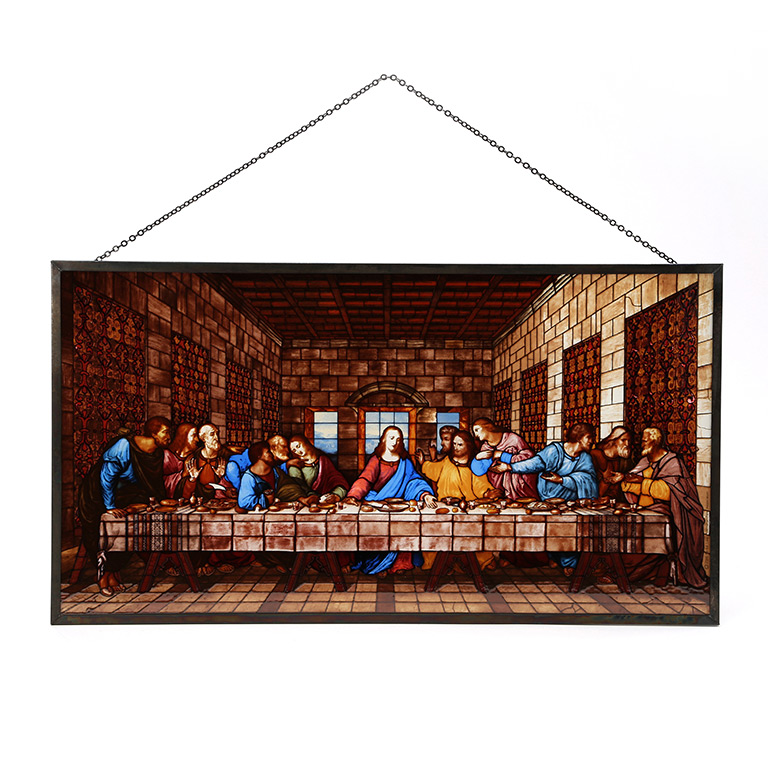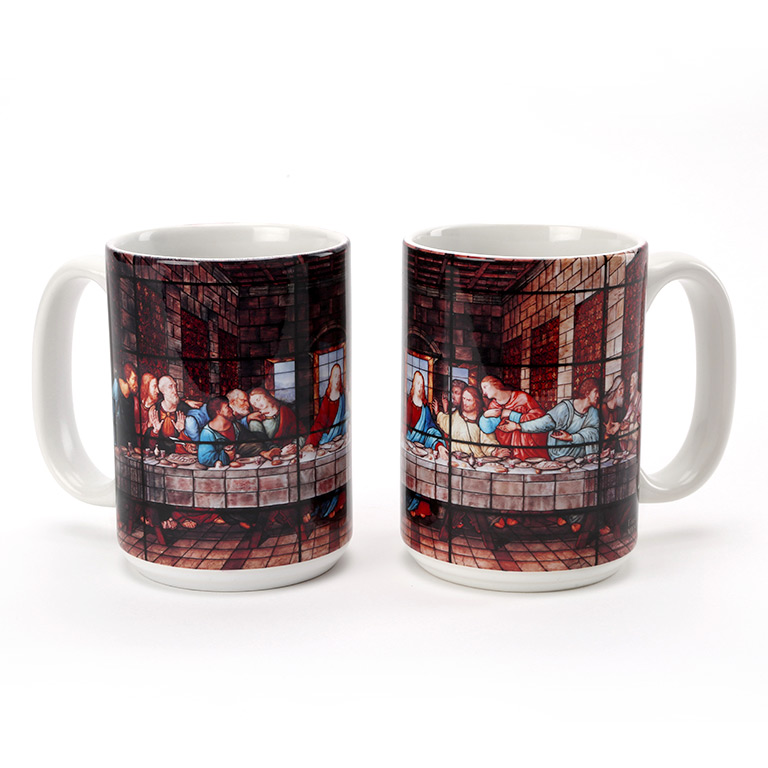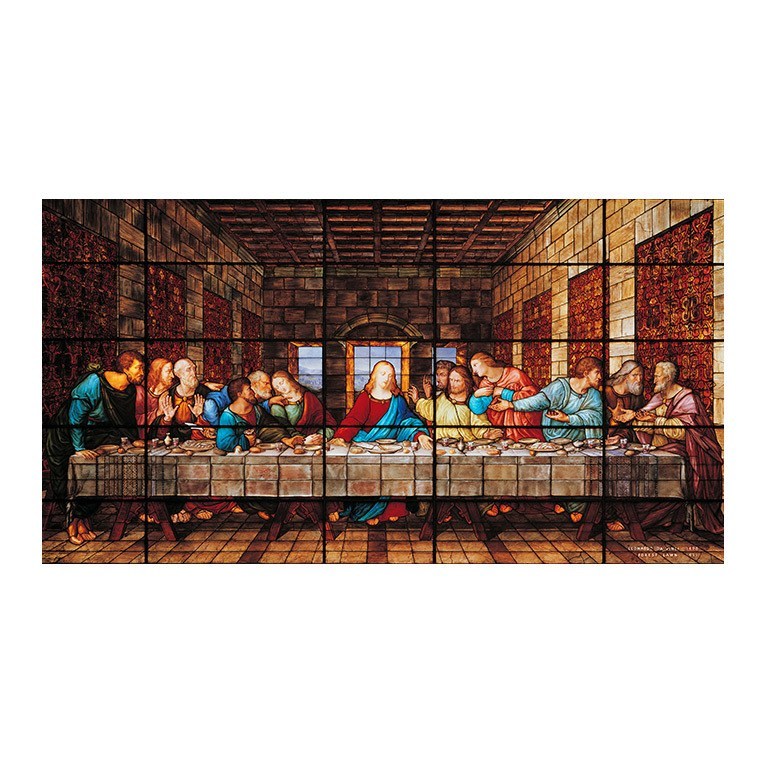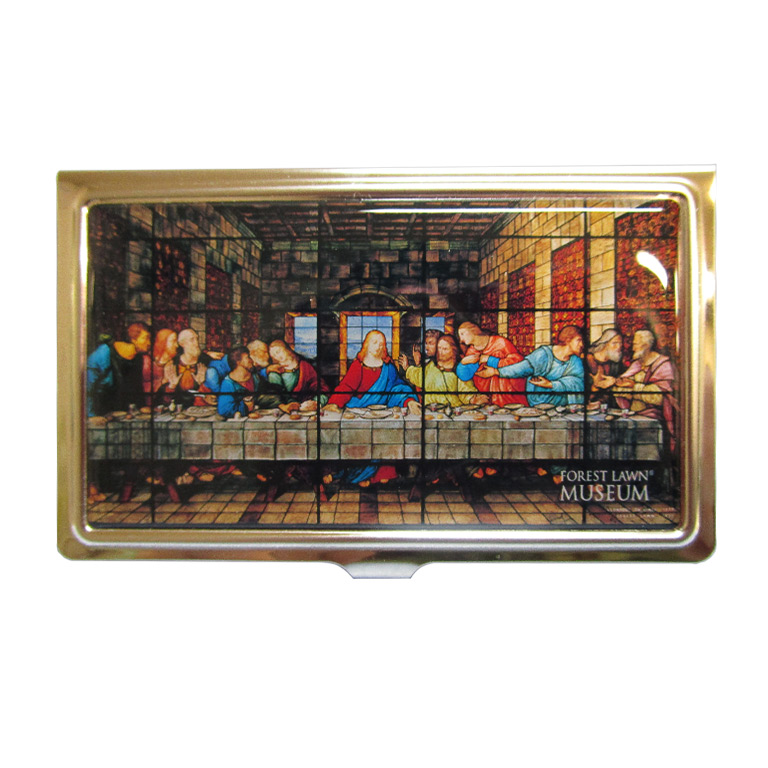Leonardo was commissioned by Ludovico Sforza, the Duke of Milan, to paint the Last Supper on the dining room wall of a monastery in Milan. The theme was a common one for monasteries at the time. What was unusual is how Leonardo placed the figures in the painting. Usually, Jesus and the Apostles would be on one side of the table, facing the viewer, with Judas on the other side. Instead, Leonardo placed him on the side of the table with the Apostles and Christ, but leaning away from Jesus, his face in shadow.
Leonardo began work on the painting in 1495 and completed it in 1498. The original is 15 feet high and almost 30 feet long. Leonardo was a master of portraying facial expression, and in The Last Supper, he captured the moment immediately following Christ’s announcement that one of the Twelve will betray him. The Apostles are grouped together in threes, and their faces portray their emotions of shock, anger, and bewilderment.
Leonardo painted The Last Supper on dry plaster, instead of the wet plaster commonly used for frescoes, and he used both oil paint and tempera. As a result, the painting began to chip and flake during Leonardo’s lifetime. In the 1600s a doorway was cut through the feet of Christ. In the 1700s, in an effort to protect the painting, a curtain was hung over it. Unfortunately, instead of protecting it, the curtain trapped in moisture, caused mildew, and scratched the painting every time it was opened and closed. Some attempts at restoration were made, but they caused further damage to the original painting.
Then, during World War II, an ally bomb hit the monastery, and although the painting survived, it was left open to the elements. In an effort to help protect the masterpiece, sandbags were piled in front of it, which led to even more mildew. A massive and meticulous restoration effort was made on the original, beginning in 1977 and was completed in 1999. It is estimated that after that restoration, only about 42% of Leonardo’s original work remains.
Dr. Eaton was traveling through Italy in June of 1924, when he conceived the idea to re-create Leonardo’s masterpiece in stained glass. He had seen the badly damaged original and was concerned that it was going to be lost forever. Dr. Eaton had also visited the lovely Cathedral of St. Francis in Assisi with its amazing stained glass. There he had heard about a talented woman, Rosa Moretti, who came from a family with a long history of creating stained glass. Dr. Eaton met with Ms. Moretti and offered her the commission, which she accepted.
It took just about seven years to complete, three years longer than the original. When Moretti began working on the project, she believed that the original was too greatly deteriorated to use as the model. Instead, she said that she would use Leonardo’s original sketches. In a photograph taken in her studio at that time, you can see that the feet of Christ are crossed and that His mouth is slightly open. In some of his original sketches, Leonardo had crossed the feet of Christ in reference to the Crucifixion. (Obviously, Moretti did not complete the work with Christ’s feet crossed.) Also, the restoration that took place from 1977−1999 uncovered the fact that Leonardo had painted Christ’s mouth open, not closed, as it had appeared for centuries.
Moretti carefully brushed the glass with a variety of paints that had to be carefully mixed from powders. She then repeatedly fired the pieces in a kiln to fuse the paint to the glass. This process can lead to a lot of shattered glass, and several of the figures had to be remade more than once. In particular, the figure of Judas broke five times before Moretti finished the project. The skill to create such a large piece is not simply artistic. To design a piece 30 feet long and 15 feet high that can hold up its own weight requires great engineering skill as well.
The formal dedication of the window took place on April 28, 1931, and California Governor James Rolph, Jr. gave the dedication address. The opening ceremonies were broadcast live on the radio, and several hundred invited guests were in attendance. For years afterward, although viewing The Last Supper Window was free, Forest Lawn required reservations in order to control the crowds who wanted to attend.





Reviews
There are no reviews yet.